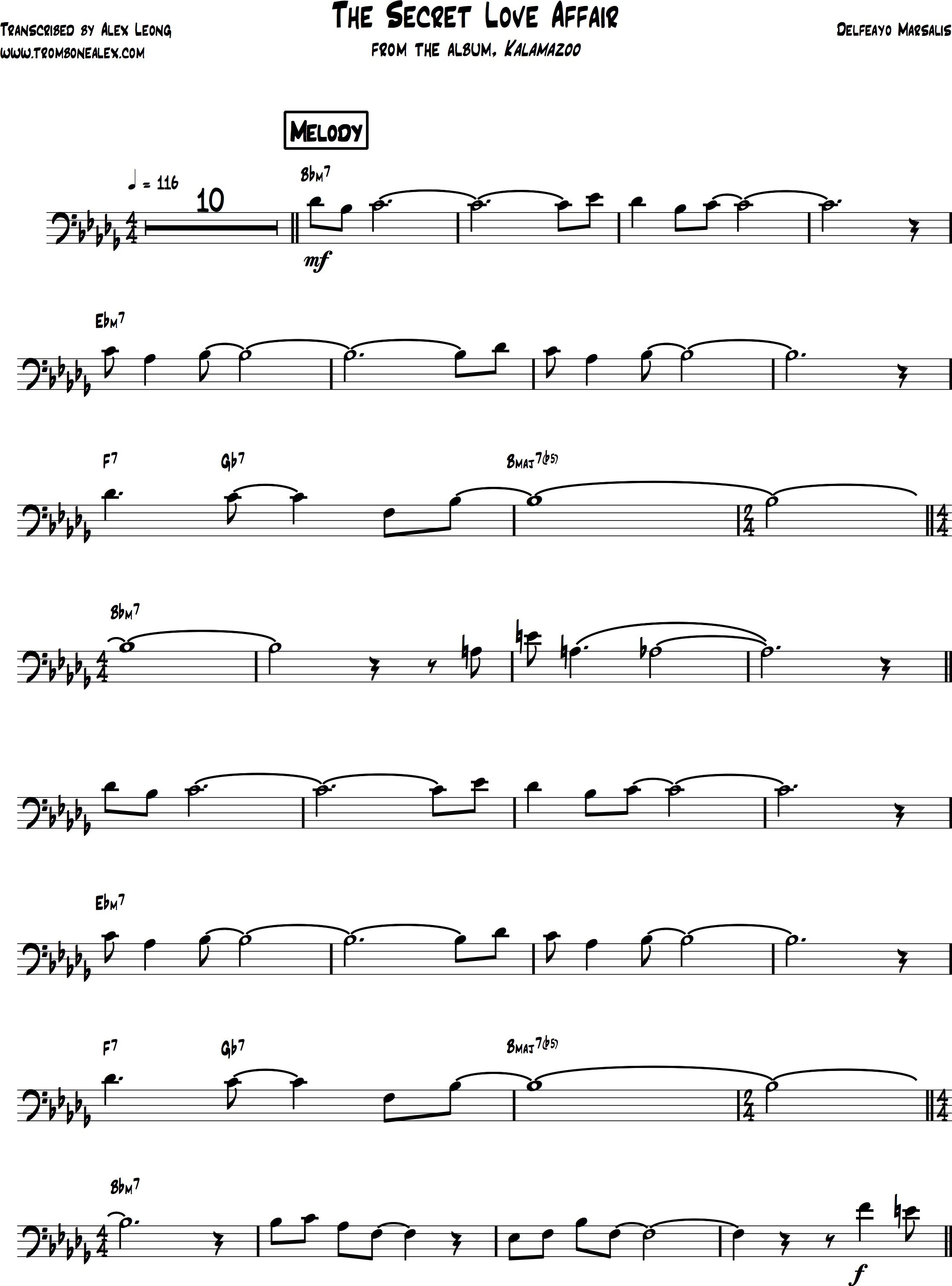Marsalis was echoing the sentiment of his former bandleader, drummer Elvin Jones, who adopted the tune as a theme song, according to the Kalamazoo liner notes - that rhythm and blues are the ice breakers in the jazz conversation.
Read MoreWhile the music honors those who persevere through the trying confines, the live performance captured on the 2017 album, Kalamazoo, demonstrates the musicians’ in-the-moment effort to make the work appear to be effortless.
Read MoreMarsalis’ use of the Harmon mute alludes to the “Toots” Theilemans sound and the playfulness of Spike Jones, however it is his wah technique that reflects the blues that may have originally inspired Joe Raposo’s work.
Read MoreThe proceeding interaction between father and son, Ellis and Delfeayo Marsalis, is so playful that it becomes difficult to hear exactly who is leading and who is following - it is a musical flirtation between two life-long admirers of each other.
Read More“Autumn Leaves” is a prime example of modalism, utilizing a diatonic harmony with a melodic-minor phrasing - in other words, it plays safely by the rules of music theory
Read MorePrivileged groups like the New Orleans Rhythm Kings had access to recording studios and publishing companies, thus establishing “Tin Roof Blues” as an early jazz standard.
Read MoreThe final track on The Payback, the last James Brown album to feature Fred Wesley as an active member of the organization, was a fitting send off for the musical director.
Read MoreBy the time that The Payback was recorded, perhaps the writing was already on the wall as Fred Wesley relentlessly played his trombone on “Time Is Running Out Fast” as if trombone solos were going out of style, especially with the popularity of disco music on the horizon.
Read MoreIn response to the global boom of salsa music, Antonio Fuentes Estrada created The Latin Brothers in 1974 to attract audiences to salsa’s capital city, Cali, Colombia, and its beautiful dancing women, Las Caleñas.
Read MoreBecause of its mainstream popularity, some songwriting circles have referred to a chord progression that utilizes a dominant-Three chord as the “Georgia” changes, despite its common occurrence in other early jazz standards heard throughout New Orleans, like “All of Me” and “Basin Street Blues.”
Read MoreFor younger bands like Big 6, the transition toward online marketing and social media has come more naturally than it has for older musicians established through decades of second-line parades with Social Aid & Pleasure Clubs.
Read MoreIt was Chicago gospel composer Kenneth Morris who first published an arrangement in 1940 based on variations sung by railroad porters that he had transcribed during his travels. Along with choir director Sallie Martin, the Martin & Morris Music Company became one of the oldest publishers of American music, and whose catalogue has since been donated to the Chicago Public Library.
Read MoreThe back-and-forth relationship between musicians and younger dancers is what pushes the music forward: the post-Civil Rights era audience led the Dirty Dozen Brass Band into funk while still celebrating bebop as its own form of protest music; the hip hop generation leaned back into the drums-and-bass grooves of Rebirth’s Frazier brothers; and the brass band music of a post-Katrina era goes viral within a fifteen-second dance video on social media.
Read MoreThe influence of New York City’s bustling jazz scene in the 1940s, using Broadway tunes to create bebop, led to the appearance of “Paper Moon” in the Tennessee Williams Pulitzer Prize-winning play A Streetcar Named Desire, a story that takes place in New Orleans.
Read MoreTrombonist Lamar Heard Sr. came to Big 6 Brass Band from playing with Stooges Brass Band, a byproduct of Rebirth’s success in the early 90s as well as the catalyst for hip hop’s influence on brass band music by the turn of the century.
Read MoreGiven the tune’s simple chord changes and singable melody, “Lady Be Good” is often overlooked by post-modern and doctoral musicians in debt to their previous lives. But in such a timeless city as New Orleans, music does not get erased - modern jazz is a living preservation of early traditions and spirits that prolong legacy rather than recycle invention.
Read MoreWith the shift of public discourse toward social media, the current evolution in New Orleans brass band music amplifies the voice of a new generation through viral brass band covers and SoundCloud mixtapes.
Read MoreTrombonist Stafford Agee passes the torch to the Big 6 Brass Band with his guest appearance on “Go Down” by providing the Mardi Gras Indian rhythms on top of a solid groove that only comes from years playing alongside Rebirth, Hot 8, Stooges, and TBC
Read More


















